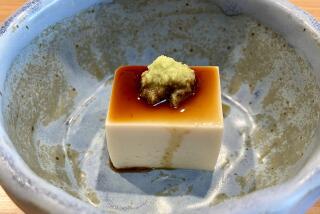The poetic soul of Tohoku
Matsuo Basho, Japan’s most respected haiku poet, embarked on a pilgrimage to Tohoku in the spring of 1689, much to the amazement of his 17-syllable-spinning contemporaries. Five months and some serious blisters later, he felt suitably moved to write “The Narrow Road to the Deep North,” a stunning poetic travelogue in which he recounts his impressions of Japan’s northern rural heartland in richly elegiac verse.
300 years later
In a sense, Tohoku has not changed much since then. Even today the region’s six prefectures are among the least-developed for tourism in Japan and by far the least-appreciated by Western eyes. Tokyo’s urbane city-dwellers and Osaka’s manzai comedians delight in referring to Tohoku folk as yokels, while most foreign visitors follow the so-called kimono trail south from Tokyo.Poetry in motion
But I was in search of off-the-beaten-track Japan, and arming myself with a copy of Basho’s account, I boarded the train heading north from Tokyo’s Ueno station. By following Basho’s footsteps I hoped to glimpse a vision of rural Japan frozen in time.A stunning sight: me
Of course, venturing off the beaten track didn’t go completely smoothly. I’d been warned that few foreigners make it this far north. When I walked into Hirosaki’s tourist office for a map, the attendant’s eyes widened and her face contorted into an expression somewhere between bewilderment and abject terror.A hard day’s night
Other receptions were warmer. I arrived without reservations in the compact but lively castle town of Morioka and discovered that every hotel had been booked by a conference of Japanese optometrists. Cursing my own myopia, I found a welcoming capsule hotel by the station, then headed off for a night out northern-style at an izakaya, a casual bar and eatery. There, residents and English teachers forged the spirit of international camaraderie with drinking games and Beatles sing-alongs.A goodbye banana
As I made to leave at the end of the night, a waitress approached, bowed deeply and presented me with a large, ripe banana. This was, apparently, a traditional gesture of thanks to the patrons. Hence the bar’s alternative name: the Banana Bar.A rural Shangri-La
Kinkazan Island has no convenience store, no Internet cafe, no hostess bar and no hassle — just a pyramid-shaped mountain, an impressive shrine, a slew of tranquil nature trails and the Minshuku Shiokaze, an archetypal family-run guesthouse with fantastic panoramic views out to sea. It was here that I finally found the rural Shangri-La I’d dreamed of, sleeping on a futon with a belly full of fresh seafood. Tokyo was only a few hours away by bullet train, but it felt like another world.Getting there
Restricted round-trip airfares from LAX begin at $980 until Aug. 29, then drop to $780 until late October. From Tokyo, the Japan Rail East network runs throughout Tohoku, with bullet-train services to Sendai, Morioka, Akita, Yamagata and Hachinohe, the region’s main hubs. Train passes are available for tourists but must be bought before arrival in Japan; for more information on policies and prices, visit https://www.jreast.co.jp/e/eastpass/top.html .Where to eat
The Koiwai Regley bakery-cum-restaurant in Morioka has a range of good-value Western-style dishes, using fresh ingredients from the local Koiwai farm; 100 yards east of the station, mains about $8. Otherwise, try Sara Sara, a smart, chilled-out place for drinks and dinner; second floor of the East 21 building opposite the park, set menus $34. In Sendai, the shopping arcades along Chuo-dori and Ichibancho-dori are the best hunting grounds for cheap eats. Sari, at the eastern end of Chuo-dori, is a good spot for gyutan, or grilled beef tongue, with rice and soup, about $16.To learn more
The Japan National Tourist Organization website, https://www.jnto.go.jp/eng , offers tips on traveling around Japan. It also provides links to hotels and reservation services.More to Read
Sign up for The Wild
We’ll help you find the best places to hike, bike and run, as well as the perfect silent spots for meditation and yoga.
You may occasionally receive promotional content from the Los Angeles Times.






